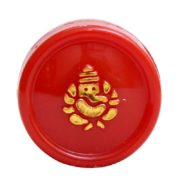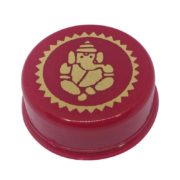In a bustling city like Dubai, where coffee is a daily essential for many, a malfunctioning coffee machine can disrupt the rhythm of the day. Whether it’s an espresso maker, a drip coffee machine, or a fancy bean-to-cup brewer, knowing how to troubleshoot and repair common issues can save time and money. In this guide, we’ll delve into the intricacies of coffee machine repair in Dubai, offering insights, tips, and expert advice to keep your caffeine fix uninterrupted.
Types and Categories
Coffee machines come in various types and categories, each with its unique mechanisms and functionalities. Understanding the differences can aid in troubleshooting and repair processes.
Espresso Machines
- Manual Espresso Machines: Operated by hand, requiring skill and precision.
- Semi-automatic Espresso Machines: Partially automated, offering more control over extraction.
- Super-automatic Espresso Machines: Fully automated, with built-in grinders and programmable settings.
Drip Coffee Makers
- Basic Drip Coffee Makers: Simple machines for brewing large batches of coffee.
- Programmable Drip Coffee Makers: Allow users to set brewing times in advance.
- Single-Serve Pod Machines: Utilize pre-packaged coffee pods for convenience.
Specialty Coffee Machines
- French Press: Manual brewing method known for its rich and flavorful coffee.
- Cold Brew Maker: Brews coffee using cold water over an extended period for a smooth taste.
- Pour-over Coffee Maker: Requires manual pouring of hot water over coffee grounds for precise extraction.
Symptoms and Signs
Identifying the symptoms of a malfunctioning coffee machine is the first step towards effective repair.
Common Issues
- Leaking: Water leaking from the machine can indicate a faulty seal or a damaged water line.
- No Power: Failure to turn on could be due to a blown fuse or electrical issues.
- Weak Coffee: Poor extraction may result from clogged filters or incorrect grind size.
- Loud Noise: Unusual noises during operation might signal worn-out components or loose parts.
- Error Messages: Displayed error codes can provide clues about underlying issues.
Uncommon Problems
- Overheating: Excessive heat can damage internal components, leading to malfunctions.
- Inconsistent Temperature: Fluctuating temperatures may affect coffee quality and taste.
- Coffee Grounds in Cup: Presence of coffee grounds in brewed coffee indicates filter or brewing basket problems.
- Steam Pressure Issues: Insufficient steam pressure can affect milk frothing and espresso extraction.
Causes and Risk Factors
Several factors can contribute to coffee machine malfunctions, ranging from mechanical failures to environmental conditions.
Mechanical Factors
- Wear and Tear: Regular use can lead to deterioration of seals, valves, and gaskets.
- Mineral Build-up: Hard water deposits can clog pipes and heating elements.
- Improper Maintenance: Neglecting cleaning and descaling can accelerate machine breakdown.
- Faulty Components: Defective pumps, solenoids, or heating elements may require replacement.
Environmental Factors
- Humidity: High humidity levels can promote mold growth and corrosion.
- Temperature Fluctuations: Extreme temperatures can affect the performance of electronic components.
- Dust and Debris: Accumulation of dust and debris can obstruct airflow and ventilation.
Diagnosis and Tests
Diagnosing coffee machine issues often involves a combination of visual inspection, testing, and troubleshooting techniques.
Visual Inspection
- Exterior Examination: Check for visible signs of damage, such as cracks or leaks.
- Interior Inspection: Remove panels or covers to inspect internal components for wear or corrosion.
- Water Reservoir: Ensure the water reservoir is properly seated and free from obstructions.
Testing Procedures
- Power Test: Use a multimeter to check voltage levels and continuity of electrical connections.
- Flow Test: Test water flow through the machine to identify blockages or restrictions.
- Pressure Test: Measure steam and water pressure to determine if they fall within the optimal range.
Troubleshooting Techniques
- Resetting the Machine: Power cycling or resetting the machine can sometimes resolve minor issues.
- Cleaning and Descaling: Remove mineral deposits and debris using specialized cleaning solutions.
- Replacing Components: Replace worn-out or damaged parts with genuine manufacturer replacements.




